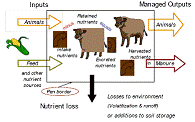Biological Systems Engineering
Date of this Version
2015
Citation
An ASABE Meeting Presentation, Paper Number: 152187827
Written for presentation at the 2015 ASABE Annual International Meeting Sponsored by ASABE New Orleans, Louisiana July 26 – 29, 2015
Abstract
Numerous advancements in machinery performance on row-crop agricultural tractors have been made in recent years. Currently, the Organisation for Economic Co-operation and Development (OECD) only tests predetermined points (E.g., max. power, max. torque) for drawbar and hydraulic power. This method of testing has been used for many years with the tractor at a steady state which is usually not typical of row-crop operations. A data acquisition system (DAQ) was designed that records implement energy consumption (E.g., drawbar loading, PTO power, and hydraulic power). The system used a LabVIEW program and a compact data acquisition system (cDAQ) to record data from instrumentation outputting drawbar, PTO, and hydraulic loads. Data were then collected and verified in accordance with OECD standards at the Nebraska Tractor Test Lab (NTTL), an official OECD testing facility. Requirements of the system were: implementation of the system on multiple machines with minor alterations, minimally invasive to the factory design of the tractor, and equivalent data compared to those recorded by the NTTL testing devices and procedures. Manufacturers’ calibration information along with standardized testing equipment used to tune NTTL testing devices were used to verify that the system would perform according to OECD guidelines. The collection methodology included hydraulic testing at steady state in accordance to OECD Code 2. The hydraulic system was verified with varying curvatures near the sensors that provided data within a 1 percent error of the actual hydraulic power. Another test included calibration of a strain instrumented drawbar within 100 lbf of a dynamic load.
Included in
Bioresource and Agricultural Engineering Commons, Operations Research, Systems Engineering and Industrial Engineering Commons


Comments
Used by permission.